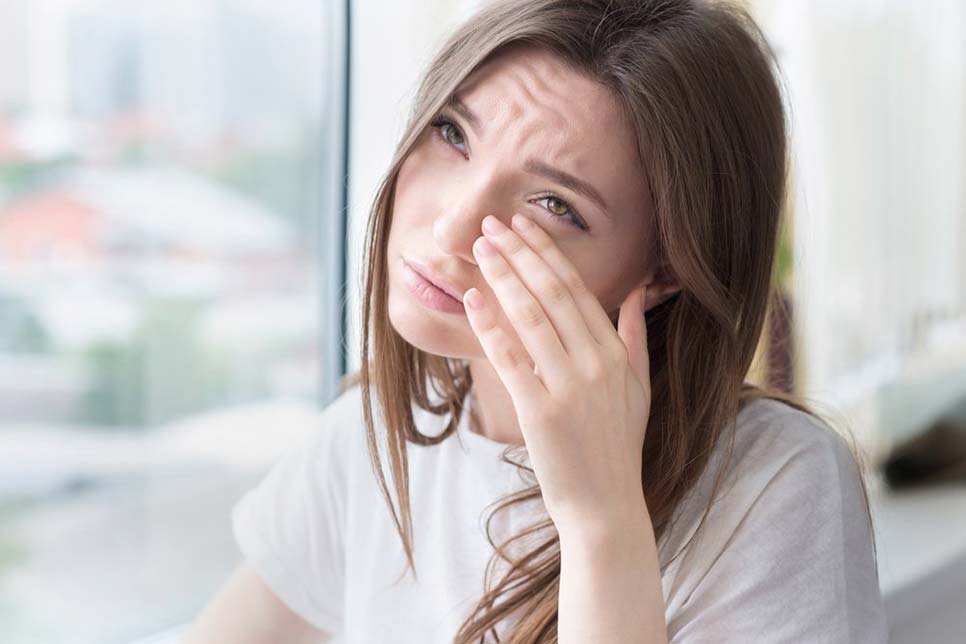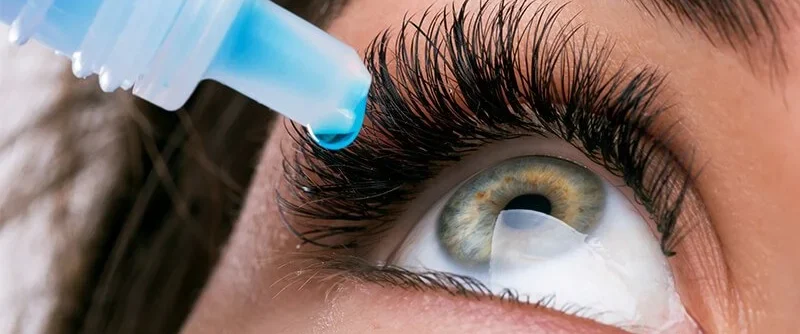Are allergies the cause of your swollen and itchy eyes?

You may be experiencing eye allergies if your eyes are itchy and are red, tearing or burning. Eye Allergies are a condition that affects millions of Americans and while many people will treat their nasal allergy symptoms most ignore their itchy, red, watery eyes.
Causes for Itchy and Watery Eyes
Eye allergies happen when your body overreacts to something just like all other allergies. The immune system makes antibodies that cause your eyes to release histamine and other substances. This causes itching and red, watery eyes. Common triggers include:
- Outdoor allergens, such as pollens from grass, trees and weeds
- Indoor allergens, such as pet dander, dust mites and mold
- Irritants, such as cigarette smoke, perfume and diesel exhaust
Eye Allergy Symptoms
The common symptoms of eye allergies are:
- Redness
- Itchiness
- Burning feeling
- Watery eyes
- Swollen eyelids
- Feeling like there is dirt or grit in your eyes
You may also have a runny or itchy nose, sneezing, coughing or a sinus headache. Many also find that their vision is briefly blurred or that they feel distracted, unproductive or tired.
The Difference Between Eye Allergies And Pink Eye
The main difference between allergies and pink eye is the cause of the inflammation. Pink eye is actually an infection that may either be caused by bacteria or a virus. Allergies, on the other hand, are triggered by such irritants as pets or pollen as mentioned above.
Allergy Eye Drops as Treatment
Eye drops are the most effective treatment to reduce eye allergy symptoms like redness, itchiness, or watery discharge. There are many allergy eye drops available — including non-prescription, over-the-counter (OTC) eye drops and medicated drops that require a prescription from your eye doctor. These different types of allergy eye drops will either prevent or mitigate symptoms, depending on how they work.
- Antihistamine eye drops – counteract the body’s histamine response, which in turn reduces itching and other symptoms. These drops have an almost immediate effect, relieving eye irritation within two minutes of use. The relief they provide may last only a few hours; so multiple doses throughout the day may be required.
- Anti-inflammatory eye drops – act on the nerve endings in and around the eye to reduce inflammation, including redness, swelling and itching. It can take a few days of regularly applying these drops before you begin to see a difference in symptoms. There are two types of anti-inflammatory eye drops: Non-steroidal anti-inflammatory drugs (NSAIDs) and corticosteroids. Anti-inflammatory allergy eye drops may cause burning or stinging when first administered.
- Corticosteroid eye drops- Often prescribed for treating long-term or severe eye allergic reactions. Corticosteroid eye drops are usually recommended for short-term use because possible side effects include cataracts, glaucoma and high eye pressure
- Mast cell stabilizers- work by preventing the release of histamine and other chemicals produced by the body during an allergic reaction. These drops may be used for months without side effects. They may even allow contact lens users to continue wearing their contact lenses comfortably throughout allergy season.
- Decongestant allergy – These drops reduce the red, bloodshot appearance of the eyes working by reducing the size of dilated blood vessels under the conjunctiva. These allergy eye drops should be used for only a short period of time due to the risk of “rebound hyperemia” that makes the redness return after the drops are used frequently and then are discontinued.
- Multiple-action allergy eye drops – combine more than one type of medication. The antihistamine/decongestant combo treats itchy, watery and red eyes. Another version of multiple-action allergy eye drops combines an antihistamine and mast cell stabilizer.
When to see a doctor
No matter what type of allergy eye drops you are using, reach out to your doctor if you suddenly start having increased symptoms.


